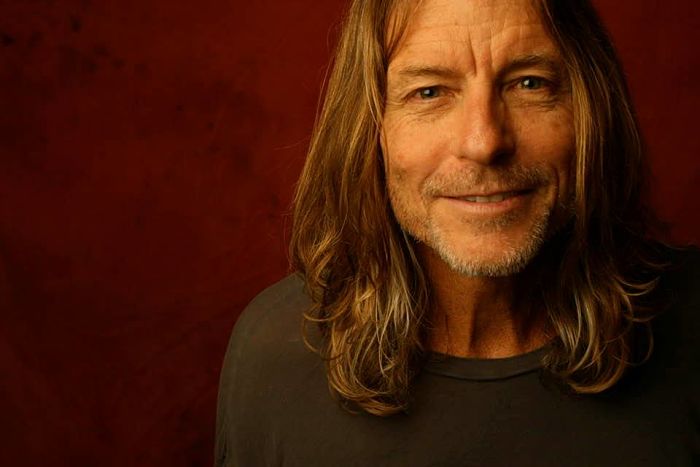Mark Andes (Spirit, Jo Jo Gunne, Firefall, Heart)
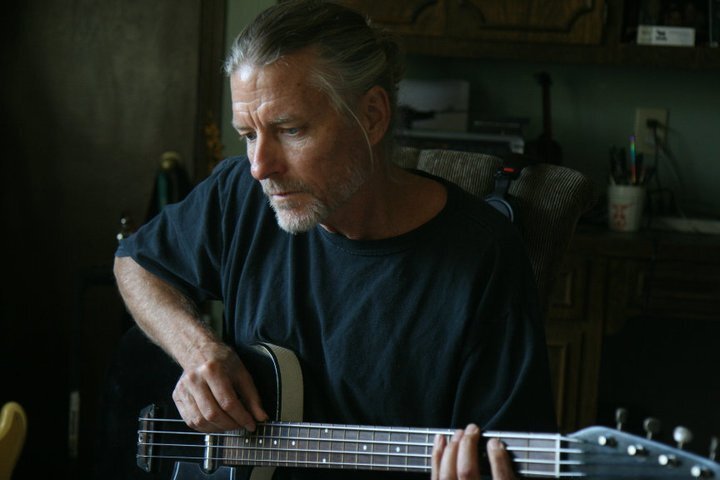
By Joe Gagliardo
What do Canned Heat, Spirit, Jo Jo Gunne, Heart, Chris Hillman, Firefall, Dan Fogelberg, Stevie Nicks, Joe Walsh, Kelly Willis, Ian McLagan (and so many more bands and recording artists) have in common? A secret weapon—bassist Mark Andes!
Mark Andes was born in Philadelphia and grew up in the San Fernando Valley. Mark’s dad was Keith Andes, an film actor who co-starred with Marilyn Monroe, and Loretta Young, among others. Though Mark grew up in the glow of Hollywood … he made his own way as an artist and musician.
Mark grew up surrounded by music in his house. Both his parents were musical, as were their friends who would regularly visit the house. Mark and his brother Matt, “Irish Twins”—not quite a year apart, took piano lessons early on, eventually dropping the piano for guitars.
In addition to a family friend who helped out on lessons, Mark also had the benefit of older friends who were knowledgeable about rock and roll who shared their knowledge. He especially loved the energy of early rock and roll—Ritchie Valens, Little Richard, Eddie Cochran, The Fireballs and doo wop.
Mark was ten years old in ‘58, the year Link Wray’s “Rumble” was released. It was an eye-opener for Mark. The frenetic energy and ominous sound of Link Wray’s guitar captured his imagination. The sound was powerful, menacing and it was easy to play – and it was the first song a young Mark Andes mastered.
As time went on, Mark and Matt taught each other to play the songs of the day, focusing on surf instrumentals-Astronauts, Dick Dale, Surfaris, Chantays, and similar artists. By high school circa 1963-65 they worked in some of the most popular bands in the San Fernando Valley. Mark switched to bass after a personnel change in one of the ensembles. Andes’ influences include Willie Dixon, James Jamerson, Paul McCartney, Duck Dunn, and Jimmy Garrison.
The band’s first recording experience were in the legendary Gold Star Studios in Los Angeles, recording a song about the Berlin Wall. The record was produced by Keith Andes, and was never released, however Mark was impressed with the sound of the band on the acetate. It made him believe anything was possible musically. That belief was further fueled by what he saw and heard with The Beatles, The Byrds, and all the groundbreaking music that was exploding around him in LA.
Mark and Matt also had some involvement with Bobby “Boris” Pickett of “Monster Mash” fame. Bobby was an actor and Keith Andes was directing him in a play. Mark and Matt were grips, and they ended up playing with him under the name “The Rolling Bones.”
Mark and Jay Ferguson first met in junior high. By the time of their graduation they made the commitment to work together. Jay had a brother, Tom, who was also playing music. Tom Ferguson went off to a folk camp and returned raving about a young guitar player named Randy Wolfe. Mark and Jay checked Randy out, and they decided to play together. Randy recommended his stepdad, Ed Cassady (“Cass”), on drums, and the band was rounded out by Mike Fondelier. By then, Matt Andes had gone off to art school.
Soon after, Cass, who was a jazz drummer, was offered an opportunity to play jazz in New York. Taking the opportunity meant that he, Randy and the family had to move to New York, which they did. It was while Randy was working at famed Manny’s Music that Jimi Hendrix, then Jimmy James, asked Randy to join his band, The Blue Flames. Because there were two Randys in the band, Jimi christened Randy Wolfe-Randy California, and the name stuck.
Mark’s next stop was as the original bass player in Canned Heat. Barry Hansen, better known as Dr. Demento, got him that gig fresh out of high school when he was seventeen years old. Recalls Mark “Barry, Henry Vestine, and Bob Hite had extensive blues record collections and we played very traditional arrangements. I learned so much in a relatively short time, and got to play fun gigs at the Avalon Ballroom, Fillmore and be-ins.”
With Canned Heat on the verge of being signed, Jay Ferguson told Mark that Randy was back in LA, and suggested that they play together again. “I thought we would form a powerhouse blues/rock group. Randy was playing with Cass and John Locke on keys in a jazz quartet when Jay and I caught up with him. He was agreeable to form a band with us, but was adamant about playing with John and Cass in our new project. The chance to play with Randy was so compelling, I was willing to let go of my desire of a blues/rock format and it opened up to what would be the eclectic sound of Spirit. Randy was the catalyst.”
The new band was called Spirits Rebellious. The band started playing what would have otherwise been dark Monday nights at the Ash Grove, a folk and blues coffee house in West Hollywood. Within a matter of weeks, the band was attracting big crowds, which included an associate of Lou Adler. Soon after they were signed to Lou’s Ode record label. The band name was changed to Spirit, and the first single was “Mechanical World,” written by Mark.
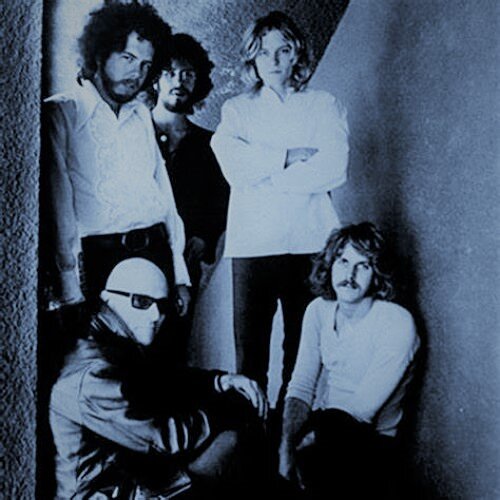
Spirit are among the first bands to meld jazz inflected rock with folk lyrics. According to Mark, the band’s influences included Bob Dylan, The Beatles, John Coltrane, Bill Evans, Mance Lipscomb, Muddy Waters, and the Jim Kweskin Jug Band.
In terms of Mark’s position within the band, he says “I was the resident rocker. I really had to apply myself to get comfortable with the jazz material. John and Cass helped me by introducing me to Coltrane, Miles, Sonny Rollins, and Bill Evans among others. I had to do my homework. Spirit was and still is a life lesson for me.” According to Mark, Spirit was the best band he was ever in–the most rewarding and the most fun.”
Spirit’s first four albums (Spirit, The Family That Plays Together, Clear, and The Twelve Dreams of Dr. Sardonicus released from 1967-1970) all are propelled by the dynamic rhythm section of Mark Andes and Cass. Those records produced many radio favorites including “I Got A Line On You,” “Nature’s Way,” “Fresh Garbage,” “Mr. Skin,” and many other memorable songs. Randy California hit his stride on Twelve Dreams… considered a classic from beginning to end.
Based on the band’s success, Spirit played shows with top bands of the era including Led Zeppelin, Jimi Hendrix, The Rolling Stones, Jefferson Airplane, The Byrds, Steppenwolf, and Janis Joplin.
Spirit began to unravel. On the night before a headlining tour of Japan, Randy decided he did not want to go. Mark and Jay Ferguson decided to work on a rock project. “We both wanted a rockin’, unpretentious band. We lobbied for my brother Matt to join us. He was attending the Chouinard Art Institute in LA and it took a lot of persuading to get him on board. Matt’s style of guitar determined the sound of Jo Jo Gunne. Fluent in acoustic, slide and electric blues guitar, he sent us in a musical direction. Matt had been hanging with members of Little Feat while at art school, and you can hear the slide guitar and piano influences of Little Feat in Jo Jo Gunne’s music.”
Mark continues “the idea was to form a compact, energetic, and undeniable rock band. It took us almost a year to find Curly Smith, the perfect drummer. He moved out from Texas and lived at my house in Topanga. We rehearsed at my place and took our time putting it together.”
They were the first band to sign with David Geffen’s burgeoning Asylum records, and had a Top 40 smash right out of the box, with “Run, Run, Run.” {Writer’s note: If you hear that song in the car, once the drum roll intro of that song hits it gives you the urge to turn the radio up full blast, open the windows and hit the highway so you can drive fast!)
In Firefall, Mark and drummer Michael Clarke (formerly of The Byrds and Flying Burrito Brothers) created a solid rhythm section, along with Joe LaLa (Blues Image) on percussion. Michael’s straight-ahead drumming allowed Mark more space to play progressive and melodic bass lines. Mark left Firefall in 1981, and rejoined the band in January 2014, where he is still an active member.
Recently Firefall recorded their own interpretation of “Nature’s Way.” “We perform that song in concert and it always receives a wonderful response. To make things more interesting, our dear friends Timothy B. Schmit, of Eagles fame (on vocals) and John McFee, of Doobie Brothers fame (pedal steel, twelve string and mandolin) are guesting. It winds up being a way to honor my friend, Randy California, and share his beautiful song at a time we all need to hear it.”
For Andes, Heart followed Firefall. In 1982, Mark was back in LA in a studio when he saw someone wheeling a road case with the name of Howard Leese and the Heart logo. Mark knew Howard from previous tours from the Spirit days, and, after confirming the gear did belong to Howard, he gave the fellow a note with his name and telephone number and asked that Howard give him a call. A few months later, Howard called Mark and asked him if he was interested in playing with Heart. When Mark agreed, Howard told him to grab a bass and come to a recording studio where Howard and Nancy Wilson were completing some tracks. When Mark got there, rather than playing a song together, Nancy suggested that Mark just plug in.
According to Mark, she said very sweetly, “Okay, play something,” so I did, auditioning, I guess.” Mark played some melodic chordal lines, and Nancy Wilson responded “wow, that was nice. You’re in.’ And that was it.” Mark anchored Heart from 1982-1992 and co-wrote their return-to-radio hit “How Can I Refuse” in 1983.
In Heart, Mark, along with drummer Dennis Carmassi (Montrose, Sammy Hagar), provided a formidable platform for the band’s music. After the band moved to Capitol Records in 1985, they made the album simply entitled Heart. That album reached Number One, sold five million copies and launched four Top Ten hit songs: “What About Love” (#10), “Never” (#4), “These Dreams” (#1) and “Nothin’ At All” (#10). A fifth single, “If Looks Could Kill” also charted making five hit singles from the same album. Mark’s ten-year stint with Heart was filled with multi-platinum albums, No. 1 chart topping hit singles, award winning videos and non-stop arena headlining tours worldwide.
Mark barely skipped a beat with his departure from Heart before he joined Stevie Nicks on the road in 1992. Not long after, when Timothy B. Schmit was leaving Peoria Illinois’ native son, Dan Fogelberg, to join the Eagles’ “Hell Freezes Over Tour,” Mark joined his Boulder buddy and he toured and recorded with Fogelberg over a ten-year period.
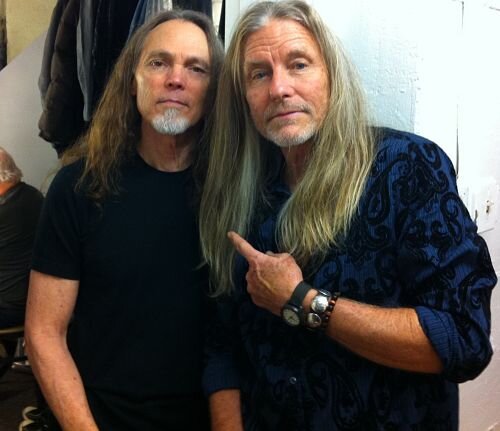
In the latter ‘90s, Mark moved to Austin, Texas which opened up many new opportunities. “What I really love about Austin is its sense of community. Austin gives me the chance to play with wonderful artists and that’s what I do best.”
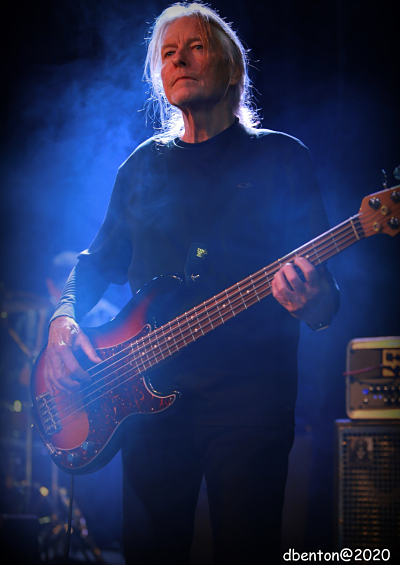
Mark became the bass player of choice, collaborating with Eliza Gilkyson, Kelly Willis, Iain Matthews, Jon Dee Graham, Alejandro Escovedo, Jo Carol Pierce, and 3 Balls of Fire. Mark spent six years with legendary former Small Faces/Faces keyboardist, Ian McLagan & The Bump Band.
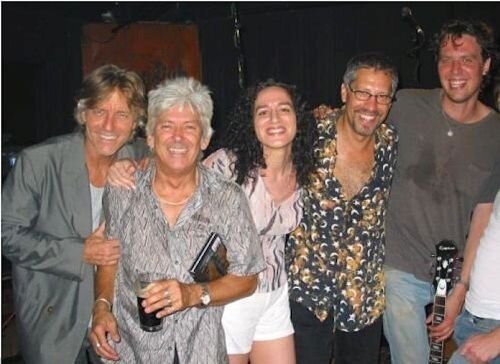
After Austin, Mark moved to an area outside of Houston, where, in addition to working with Firefall, he has done a tremendous amount of studio work, including with Kenny Cordray who wrote ZZ Top’s “Francine.”
Although Mark does not consider himself a songwriter, he and Eliza Gilkyson co-wrote, “Beauty Way,” which was a turning point for Gilkyson’s career. His other songs include Spirit’s “Mechanical World,” Firefall’s “Anymore,” Heart’s “How Can I Refuse?” and “Take Your Place” on Alejandro Escovedo’s The Boxing Mirror.
As to Mark’s playing style, he says “the bass is the backdrop behind everything. I used to play guitar, and I still compose on the guitar, but I’ve always loved the bass. It’s the connecting bridge between the drums and the melodic instruments. The bass literally moves you. I’m not a virtuoso; I just like to keep it simple. I really enjoy playing parts that happen to be accessible. I don’t like overplaying. I don’t like to take solos.”
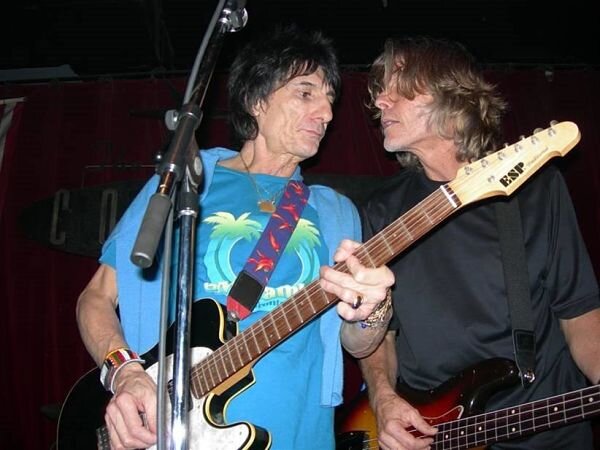
Mark’s first bass was a St. George bass. Mark notes “the first professional bass I got for myself was a ’64 Precision; I put a ’57 Precision neck on it when I was in Spirit, and that’s the instrument I used for years; I still have it. Originally it was a three-tone sunburst; at one point I stripped the finish off of it, then sometime later I got a guy in Nashville to put a two-tone finish on it, and I put a gold anodized pickguard on it as well; so these days it looks pretty much like a ’57.” That bass was used on the Spirit and Jo Jo Gunne records. His arsenal also includes a ’61 Fender Jazz bass, and a Fender five-string Precision. While his rigs have varied over the years, his go to rig is an Ampeg 8×10 SVT.
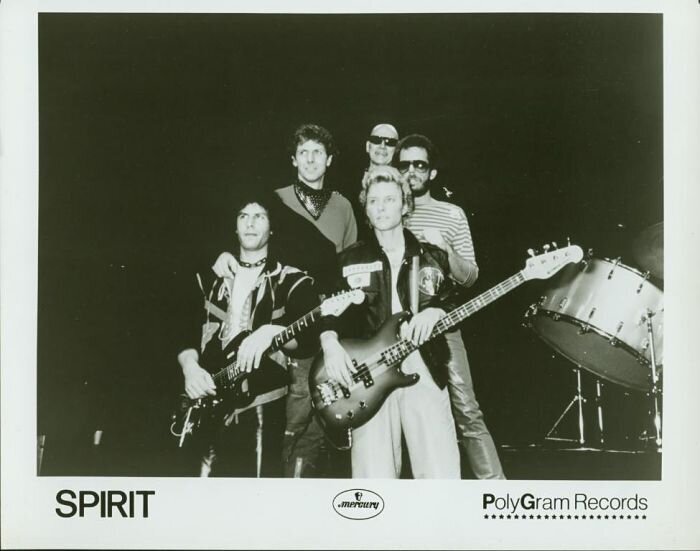
Spirit “Nature’s Way” https://youtu.be/qvQa04JP73o
Spirit “When I Touch You” https:// youtu.be/KGtTFOUwQZ8
Spirit I Got A Line On You https://youtu.be/mzoQvuCfin4
Jo Jo Gunne “Academy Award” https://youtu.be/LZNfCL0VfIA
Jo Jo Gunne “Run Run Run” https://youtu.be/cOi0Iv5J45c
Heart “Never” https://youtu.be/zWzy5q_M5Ho
Mark live with Ian McLagan The Bump Band https://youtu.be/AeJqok1H_X4
Jon Dee Graham “One Moment” https://youtu.be/6BsW3s_uCV8
Firefall “Nature’s Way” https://youtu.be/ivvQJoF54Kw
“Real World Magic” title track from Mark’s instrumental album: https://youtu.be/L9ZJkY0MA70
